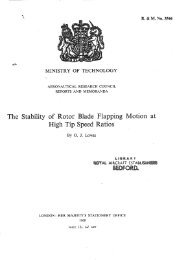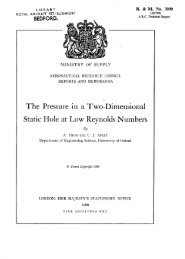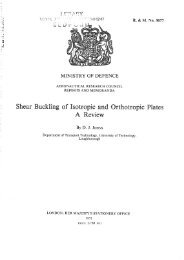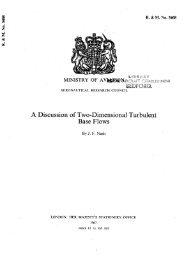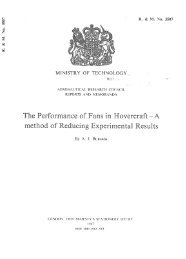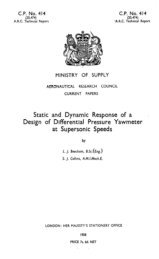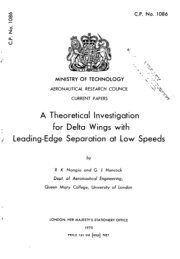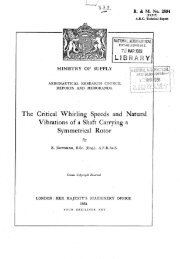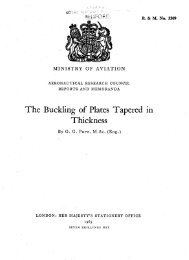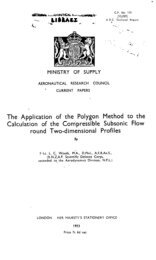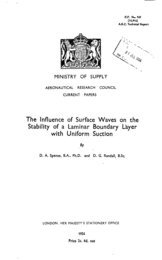Fatigue behaviour of BS 2L65 aluminium alloy pin - aerade
Fatigue behaviour of BS 2L65 aluminium alloy pin - aerade
Fatigue behaviour of BS 2L65 aluminium alloy pin - aerade
You also want an ePaper? Increase the reach of your titles
YUMPU automatically turns print PDFs into web optimized ePapers that Google loves.
10<br />
4 DISCUSSION<br />
4.1 ~ s i v a t i n g bushes<br />
It is normal practice, when using a steel bush in an <strong>aluminium</strong> <strong>alloy</strong> lug,<br />
to cadmium plate the bush. Plating is usually followed by a passivation process,<br />
which consists <strong>of</strong> dip<strong>pin</strong>g the bush in a solution that deposits a fine chromate<br />
layer on the cadmium plating, in order to give a greater resistance to corrosion.<br />
Most <strong>of</strong> the bushes used in this programme were cadmium plated but not passivated;<br />
however a limited number were treated in order to assess the effect <strong>of</strong><br />
passivation.<br />
Fig 10 shows only a small effect <strong>of</strong> passivation on life under constant<br />
amplitude loading over most <strong>of</strong> the alternating stress range. The most signifi-<br />
cant effect was at the longer endurances, where the fatigue strength was reduced<br />
by about 45% in the passivated case° This effect was probably due to an increase<br />
in fretting damage brought about by the hard chromate particles deposited in the<br />
passivation process.<br />
Only a limited number <strong>of</strong> specimens were available to assess the effect <strong>of</strong><br />
passivation under NBR loading. The results, presented in Fig 8, did not show<br />
any significant effect. However, an insufficient number <strong>of</strong> specimens were tested<br />
to draw any definite conclusion. The possibility that passivation affects the<br />
fretting damage would be less under random loading, as large load peaks in the<br />
spectrum are likely to cause earlier crack initiation than under constant<br />
amplitude loading.<br />
4.2 The effect <strong>of</strong> an interference-fit bush on the life <strong>of</strong> a lu~ under constant<br />
amplitude loadin~<br />
When comparing the <strong>behaviour</strong> <strong>of</strong> bushed and unbushed lugs, it should be<br />
remembered, as stated in section 2.1 that the unbushed lugs were double ended,<br />
whereas the bushed lugs were <strong>pin</strong>-loaded at one end only. Thus, in the unbushed<br />
case, failure occurred at the weaker <strong>of</strong> two holes° This caused a slight lowering<br />
<strong>of</strong> the log mean life, but it is considered that this was <strong>of</strong> only small magnitude,<br />
because <strong>of</strong> the small scatter exhibited by <strong>pin</strong>-loaded lugs.<br />
Fig 11 shows log mean endurance curves for lugs with and without bushes.<br />
Comparing the bushed and unbushed performance first at the lower mean stresses,<br />
which were similar in the two cases, it will be noted that the effect <strong>of</strong> the<br />
interference was to increase fatigue life considerably, which is in accordance<br />
with the findings <strong>of</strong> other workers 1'2'3'4. It should be pointed out that the



